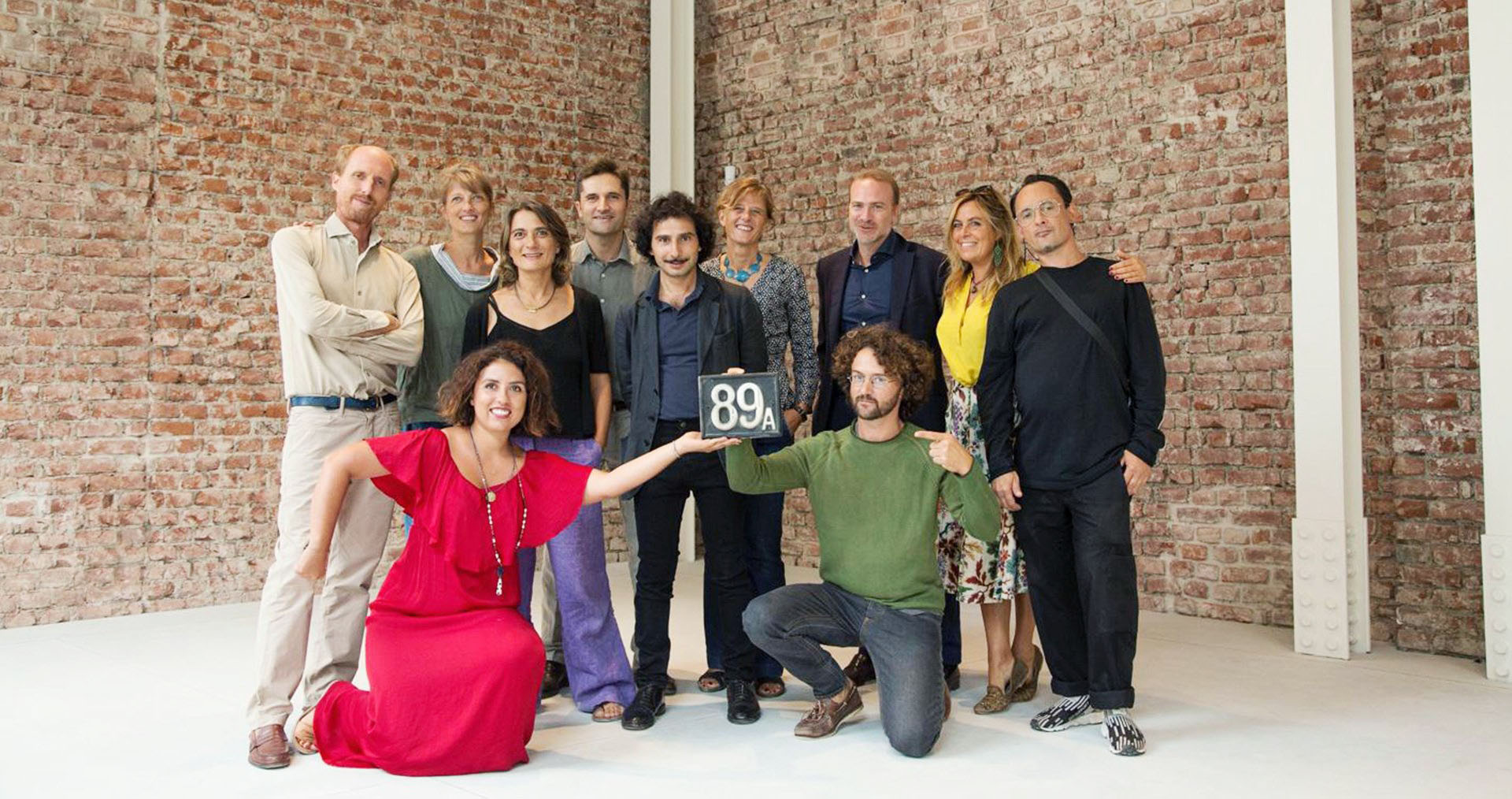CASA DEGLI ARTISTI
GC: Casa degli Artisti is a center for residency, production and use of art based in Milan. The history of the center is very ancient, born in 1909 as a place where to host laboratories and ateliers, over the years it has undergone many changes until it was redeveloped and renovated. How was the process of rebirth of Casa degli Artisti and what were the founding reasons?
A first nucleus of the current Casa degli Artisti team gathered well before the announcement came out around the desire and the will to imagine a project to give a new life to this extraordinary place, aware of the fact that it was far from easy starting. The vision to relaunch the House was therefore formed in conditions of pure ideality, it was a compelling hypothesis, a beautiful dream. For a year we have discussions, meetings through assiduous, exchange of writings, continuous revisions. We believed in it, and the Municipality of Milan believed in us, rewarding the work we did. About the reasons behind Casa Degli Artisti, I would say that at the bottom of it, there was something like a call, we were motivated by the desire to be able to keep the House anchored to its vocation, and to give back to Milan a place that could be more open than ever, and above all to artists. Casa degli Artisti (house of artists): just repeat the name of this place and meditate on it, everything else follows as a logical consequence.
GC: Casa degli Artisti has a very important contact with the city of Milan both through an offer of cultural projects aimed to be as wide as possible to the audience, and with the inclusion of artists and researchers. In addition to these activities, there are also a number of projects, such as “Sportello Urban Art” and “Progetto città”, which are deeply linked to the urban planning of the city. How do you try to connect with the city of Milan, its inhabitants and the artists who live there? What kind of difficulties do you encounter during the phases of these projects?
Right from the start we thought that a relationship of good reciprocity betweenCasa Degli Artisti and the city should be triggered, and that Casa Degli Artisti could have a role in public life, that art could have it. In a high, non-aligned sense,Casa Degli Artisti is a political project. Art is political because it creates a bond, a community. In 2022 we have created an important public project together with Deloitte, a competition for a sculpture dedicated to Margherita Hack, which on June 12 will be placed in Largo Richini, in front of the State University. This is a project that traces a direction thatCasa Degli Artisti intends to follow, bringing together the artists, to bring their work out, and make it part of our city. To ensure that art can take part in the life of the city, it is essential to try to intercept the instances, the problems, the gaps, resonate and match the times we live in. In this sense, art has to be contemporary. Casa Degli Artisti itself is nothing more than a sounding board for the voices of the artists, with the difficult task of enhancing their differences, and composing them polyphonically, like a great choir. This is the most difficult thing, for the rest of the difficulties, with great effort, we solve them. Beautiful things are difficult.
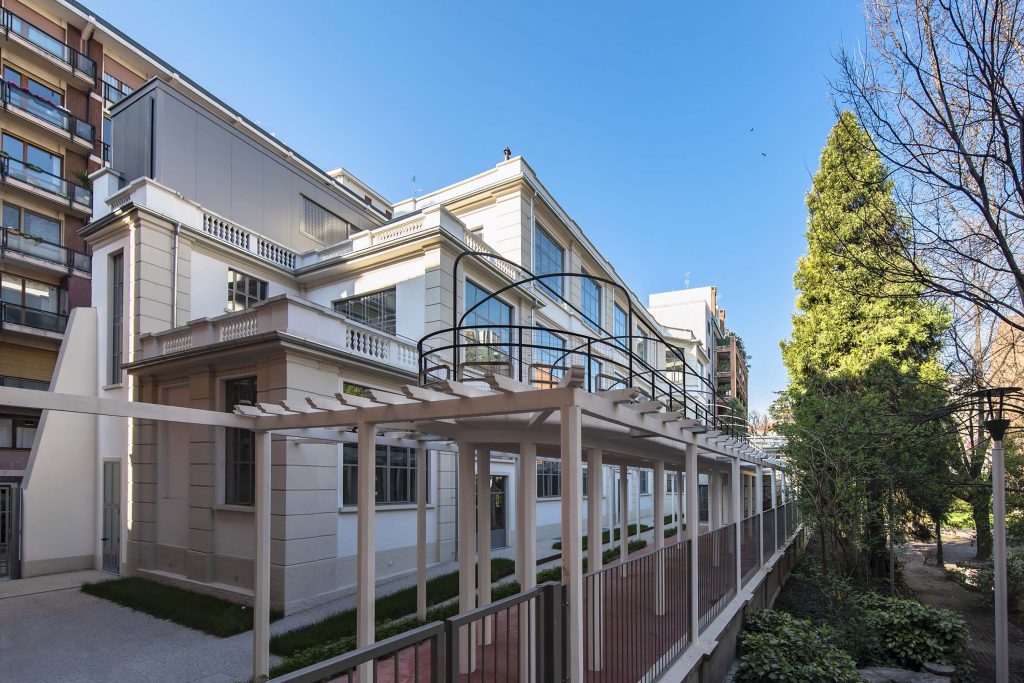
Casa Degli Artisti, Milano
GC: Besides being numerous, Casa degli Artisti team is very diverse and is made up of very different professional figures. If on the one hand this gives you the possibility of being able to weave different skills and resources, how do you manage the coordination of so many different visions and experiences?
CDA: We manage it. With many long meetings, and learning to consider the whole as a priority over personal visions, personal tastes. It is an exercise in non-exhibitionism and non-narcissism. None of us is the curator of Casa Degli Artisti, but this allows us to have different curators from time to time together with the artists in residence, keepingCasa Degli Artisti more open and surprising, and more interesting for both the artists and the public. Somehow the internal heterogeneity of the management group reflects the wide variety that exists, both in the public and in the artists. The house we are trying to give new life to is a transversal and at the same time non-generic place, but this is an ambition that cannot be designed, much less demanded in words.
GC: Casa degli Artisti was born as a space with a strong vocation for interdisciplinarity and the exchange of different knowledge: “12° Atelier” is a project in which these aspects manage to coexist with each other and generate situations of dialogue between different professional figures. How do you intend to carry out projects of this type and what has been the feedback obtained?
CDA: The “12° Atelier! is the virtual extension of the 11 ateliers of Casa Degli Artisti, a project dedicated to the experimentation of VR environments by artists and transdisciplinary research. Also in this case the coordination and development of this project involved the collaboration with a philosopher who is at the forefront in the investigation of these issues, Andrea Pinotti, professor of aesthetics at the University of Milan and principal investigator of a European project, ” AN-ICON ”, who together with his multidisciplinary team has curated and produced two residences, the first with Luca Pozzi and then with Emilio Vavarella. It is a truly complex and visionary project, which combines artistic work with philosophical work, and not only that of research. We are at the first experiences, already extremely sophisticated, but the potential is still to be explored and unpredictable. We are very proud of this collaboration and this project, and we are convinced that it can be a great stimulus for everyone.
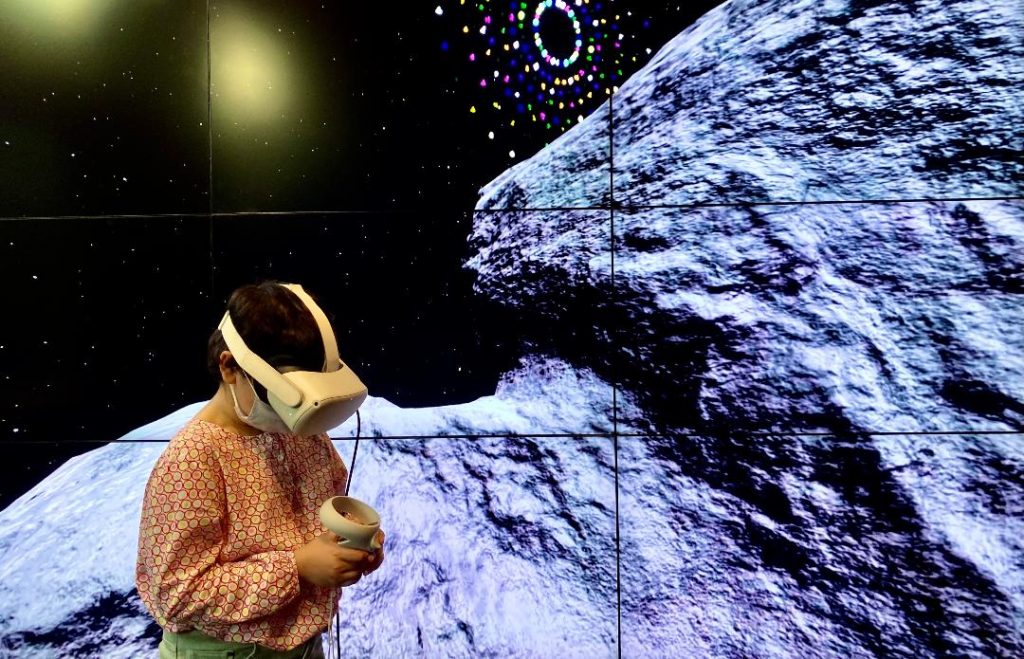
Luca Pozzi, Rosetta Mission 2020 (RM2020), 12° Atelier, Casa Degli Artisti, Milano
GC: Considering the two years that have just passed and the period of great uncertainty in which we are still living, how did you react to the pandemic emergency and how was it possible to keep your projects going? What were the changes that this situation caused and how has the reception of artists in residence changed?
CDA: We had to close three weeks after reopening, it was a bad blow, we lost important partnerships with companies and a lot of money needed to run the expensive machine that is the company. They have been two years of continuous interruptions and this has weighed heavily on the development of the residences, but even if with difficulty we have managed to give everything we could to the artists and to make them realize their projects. But let’s look ahead, we resisted and Casa Degli Artisti is preparing to receive new inhabitants soon, with the launch of a double call for curators and artists.
GC: The residences with national and international artists, divided by categories, are the living center of Casa degli Artisti. How do you approach the selection of the different artists? How do you communicate with your guests during the residency program? Over the years, have you noticed a growth or development, even if not calculated, in these experiences?
CDA: There are two access doors for artists to the residences: by invitation and by open call. This double way of entering the House is the only difference, but it is a difference that only concerns the way in which the artists enter Casa Degli Artisti, and that once inside it does not reverberate in a hierarchy or in a difference in value. On the contrary, the reason for this difference lies precisely in the desire to bring together, to bring together, more mature artists and younger artists. It is a way that we have imagined to favor intergenerational confrontation, the profound exchange of perspectives that can exist between artists beyond the ages. What we try to do, as far as possible, is to favor working conditions, starting from the same architectural conformation of the spaces. There are no original divisions between the ateliers, we have thought for a long time whether to restore them, but it is not yet clear if they are really necessary. In the sense that now the two study floors are open and the artists have an assigned space, personal, but communicating with the others, without walls, without the possibility of closing themselves off, of completely isolating themselves. In fact, we think that artists should come to the House to experience something different from what happens in their own, personal studio, which is the meaning of working there and nowhere else. We are also trying to understand what is best from the residency experiences of the artists, there is no perfect solution for everyone, and therefore the best thing that can be done is to remain flexible and able to transform and change again, and again, do in so that the metabolism of Casa Degli Artisti is dynamic.
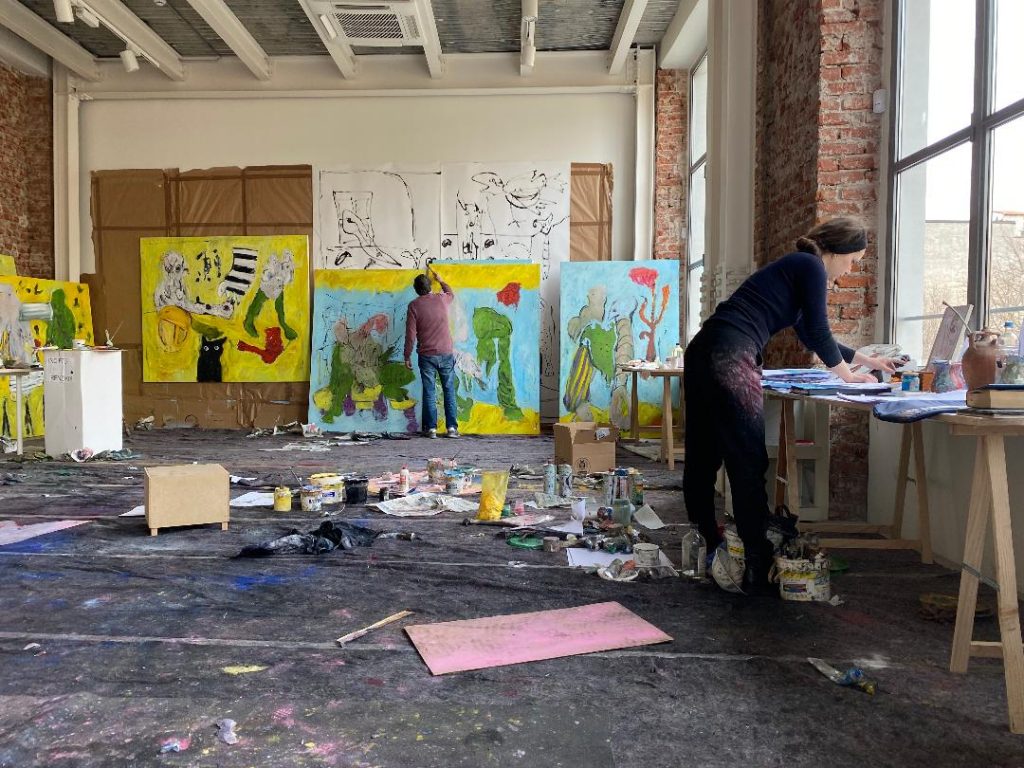
Antica Straniera, Perimario Dorigatti e Lara Ilaria Braconi, Casa Degli Artisti, Miano
GC: Casa degli Artisti is also designed as a meeting place where the public can come into direct contact with the artists, thus stimulating a continuous dialogue. How do you try to keep the residences as open as possible, thus increasing the exchange between artists and visitors? In the planning of workshops or restorative events, how do you try to include the public and therefore the city?
CDA: We always start from the architecture of Casa Degli Artisti: two floors of studies and a ground floor open to the public, every day. The work carried out in the studios is presented on the ground floor, in a succession of short exhibitions, precisely to give the possibility to all the artists to present their work, and to the public to find always different contents. Then there are also moments of study visits, but we must be careful not to make the production of art spectacular, which instead needs a protected dimension, not exposed to the gaze of the public ahead of time. Dialogue must take place when one is ready to speak and listen, when a work is sufficiently defined not to risk being misunderstood.
GC: What are the future projects you are working on? And what are the projects that find continuity through new forms or methods of presentation?
CDA: Meanwhile, there is a title that will accompany us for the next two years (and maybe beyond) which is “Human Nature”. This title, far from being a statement, is a huge question, which affects the relationship of man with nature, with himself and with others. This question is an alarm light on, which indicates something or a lot that is not working without knowing exactly what, what must be understood, will have to be investigated, and we think that artists know how to be among the best interpreters of anxieties and possibility of the time we live.
We are launching a double open call for curators and artists, and for this edition we have invited Milovan Farronato as senior curator. The two curators who will be selected will work with him, by Milovan himself and by members of our scientific committee such as Alberto Salvadori and Lorand Hegy, together with some external members but with whom the House is having a nice dialogue, such as Giovanna Amadasi of Hangar Bicocca , or Jolanda Ratti from the Museo del 900. The two curators selected on open call will also join this jury to choose the six artists who will be the next “inhabitants” of the House. We think this double call format for curators and artists is an interesting path to follow and repeat. We’ll see!
© All rights reserved
14/04/2022
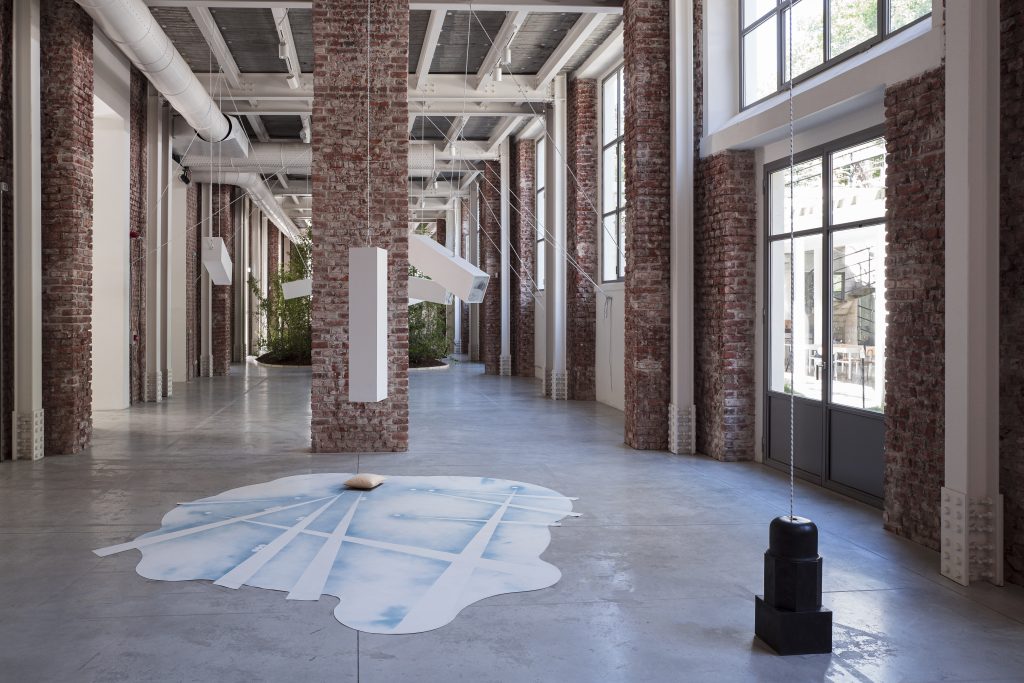
Sergio Breviario, Avrei Brio, Casa degli Artisti, Milano

